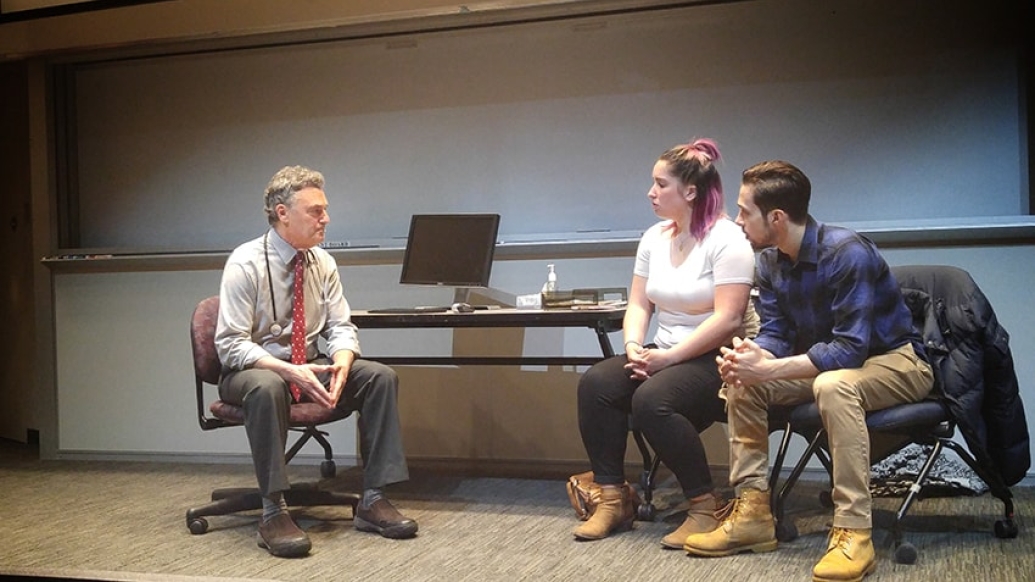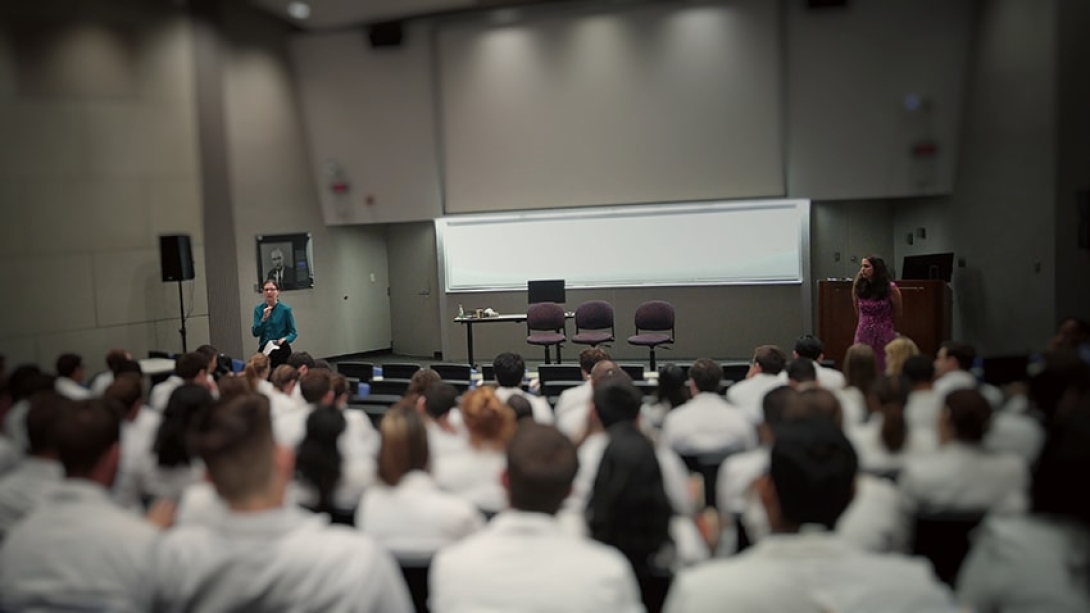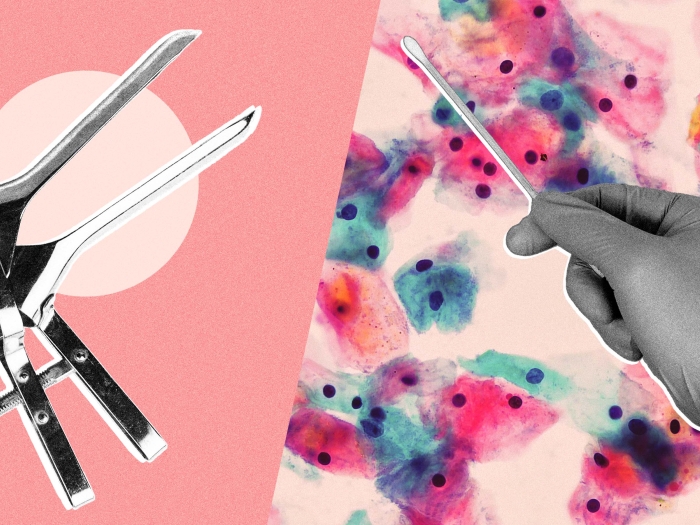Each year, first-year Michigan medical students are prepped for one of the most difficult tasks they’ll face in their field: breaking bad news.
7:00 AM
Author |

"Hi, Joanne, how're you feeling today?" her doctor asks.
When he walked into the room, he brought with him an uneasy air. She had been going through chemotherapy for a few years now, getting better and then feeling poorly again.
LISTEN UP: Add the new Michigan Medicine News Break to your Alexa-enabled device, or subscribe to our daily audio updates on iTunes, Google Play and Stitcher.
"I want to talk to you about your treatments. At this point, I'm not sure chemotherapy is the best option for your health. My team and I want to focus on keeping you as comfortable as possible and treat your symptoms the best we can," the doctor says, slowly and carefully. Her heart falls into her stomach.
"Are you saying you're giving up?" she asks.
This conversation isn't real; it is a fictional scene inspired by the one-act play "Breaking Bad News," which helps University of Michigan Medical School students understand the patient's perspective. But interactions like these are very real — they happen every day — and are some of the most daunting tasks these future doctors will face in the medical field.
The play is just part of a larger training effort that equips students to conduct these difficult conversations as practicing physicians.
"Breaking Bad News"
The play imagines the interactions — good and bad — which the fictional Joanne has after a polyp removed during a colonoscopy is found to be cancerous, and as she struggles to make sense of her life post-diagnosis.
The intensely personal and painful moments shared between Joanne and the members of her care team help show the complexity in how people respond to bad news, which factors contribute to that reaction, and how medical staff can react.
MORE FROM THE LAB: Subscribe to our weekly newsletter
The presentation is offered at the end of the medical students first year with the Doctoring course in late May or early June. The 90-minute one-act precedes a panel of Michigan Medicine staff members who answer medical students' questions and give advice. Following the panel, the students break into smaller groups and practice having those difficult conversations with the actors.
"Breaking Bad News" audience members have said the show is, "very professional and clearly well-researched," and "this is a great, different way to learn. It's nice to have a preview in a low-stakes setting." Student evaluations of this play across multiple cohorts consistently highlight the value of these connected sessions for their learning and for their future practice as clinicians, says Armstrong.

It's an experience presented by the U-M Center for Research on Learning and Teaching (CRLT) in collaboration with the medical school's Doctoring course, led by Jennifer Stojan, M.D. The CRLT Theatre Program, also known as the CRLT Players, puts on shows to support CRLT's mission of providing professional development around teaching and curriculum design for faculty, graduate students and academic administrators.
"When we prepare for any role-play, we sit down and think, 'What kind of financial resources does someone have? Do they have a support system? How scary is the health care system to them? Do they have a strong tie to a religious faith?'
"We try to address these things in the characters our actors portray so the students can see these at play," says Sara Armstrong, Ph.D., artistic director of the CRLT Theatre Program.
Tips for medical students
It's tough to break bad news, but it is even more difficult to receive it. This is why the panel suggests treating patients as people, first and foremost.
"There is a lot that has been written about the process of breaking bad news, and these frameworks can be great tools if you don't think of them as a checklist that you have to move through in lockstep. It really is about being ready to engage with the particularities of the person across from you," says Armstrong. "You can have a plan, but you don't know what that person's going to need from you in that moment until it happens."
SEE ALSO: 'Not Sandbox Teamwork': Class Teaches True Cross-Disciplinary Collaboration
And the patient isn't the only one on this journey; addressing their support system is critical, too. Friends and family need care and validation just as the patient does. When they express anger, it's not usually directed at the doctor, it's the world. Engaging these feelings can be productive for the patient and their support system.
As difficult as it is, creating an overly optimistic view of a situation or setting false expectations isn't fair to a patient. Cancer treats every person differently, so it's the responsibility of the medical professional to determine when it is time to start talking about the 80 percent chance someone won't be cured over the 20 percent chance they might be.
Emotional responses are complicated so it's important to read the people around you, Armstrong stresses. While some patients may want a reassuring hand, others may want to be left alone for a few minutes. Some patients may want the news given to them straight while others feel comfort in their doctor offering them a distraction from the complexities of life-threatening ailments like cancer.
It is these patient differences that make practicing such situations imperative.
"Content knowledge and skill acquisition is important for medical students, but using that knowledge and those skills to put patients at the center of it all is truly significant," Armstrong says.
Photo by Tae Hoon Yoo

Explore a variety of healthcare news & stories by visiting the Health Lab home page for more articles.

Department of Communication at Michigan Medicine
Want top health & research news weekly? Sign up for Health Lab’s newsletters today!





